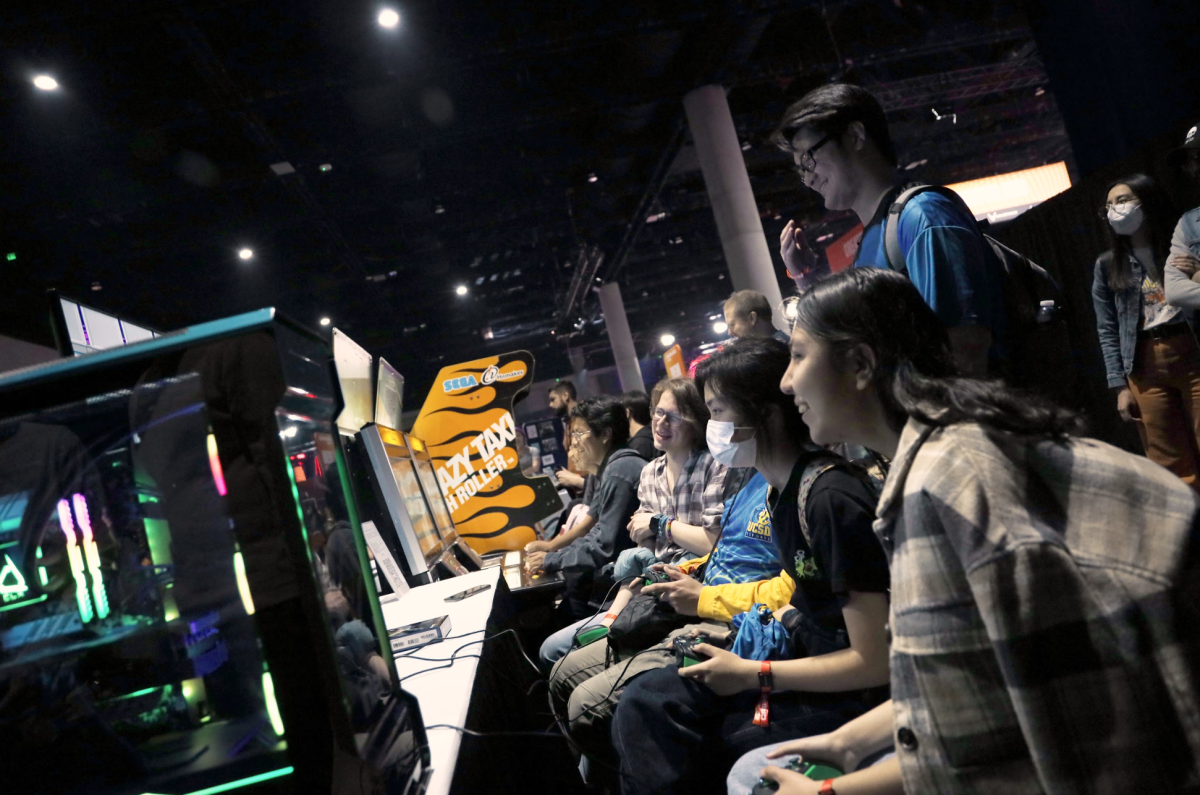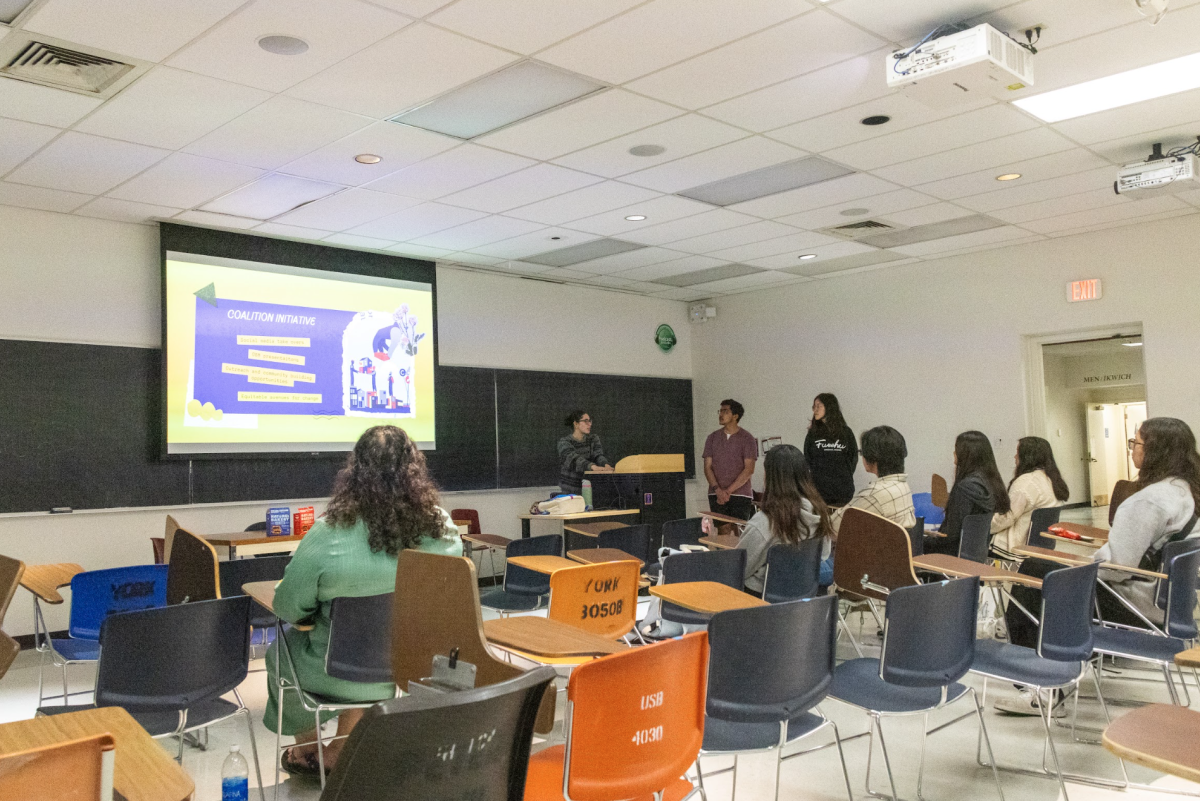It is 3 p.m. on a Friday afternoon at the Food Co-op. Five employees move from the back room where they hang out into the store to dance spastically. Two of them break dance, one hops on a pogo stick and another freaks like he is in a gangster rap video.
These students are some of the 14 core members who consistently work at the Food Co-op. They get $8 an hour to amuse themselves — and customers — as described above. Oh yeah, they also work.
Employees and volunteers run the register, price the products, clean, deal with food vendors and make changes to their store. They are also responsible for the financial well-being of the co-op. Since there is equal status among the employees, decisions are made collectively.
Sandwiches, soups, egg rolls and baked goods are prepared and made in the small kitchen in the back of the store. In the office, binders keep the co-op’s records in order. They have a computer to play the MP3s that are the source of their in-store music. Upon request, you might be able to get them to play Michael Jackson’s entire Thriller album.
Monica Bennett, one of the employees, said that this informal atmosphere and cooperative working environment make the job enjoyable.
“”It is an alternative to systemic jobs,”” Bennett said. “”Everyone knows how everything works here and there is a great sense of camaraderie. Because I know everyone here so well and I feel so much a part of the community, I want to look out for everyone and be busy helping.””
Shaun Fuller has worked at the co-op for the past nine months.
“”The Food Co-op creates a nexus, a little community for like-minded people,”” Fuller said.
The co-op, established in 1978, is a completely student-run organization. In addition to the paid employees, the co-op uses volunteers who can offer their help for as many hours a week as they like. Volunteers who work more than two hours a week get a 25 percent discount on food.
Because no one is in charge at the co-op, decisions are made democratically. The cooperative has a general framework that it uses to govern what foods to sell. It also selects as a group what products to promote.
Several criteria are used to determine what products will be sold, and which ones will not make the cut.
Employees scrutinize the vendors from which they buy, hoping to avoid, as Fuller said, “”companies of ill repute.”” They investigate company procedures that are alegedly unjust to workers or unfriendly to the environment.
The co-op also tries to stay away from products that are produced as a result of death or maltreatment of animals, with the exception of dairy products. The co-op does not sell food that has chemical additives such as artificial preservatives or sugar sweeteners, and works hard to minimize the use of saturated fats.
“”Most importantly,”” Fuller said, “”we want to serve food that’s good, healthy and not too pricey.””
Bennet explained other reasons for the co-op’s business practices: “”We hope to create a general consciousness about what tou are putting in your body, knowing what you put into your body, being autonomous.””
Each item needs 100 percent approval from the members, so any member can block a product from being sold at the co-op. On Sunday evenings, meetings take place to discuss changes that will be made to the store, including which products to stock. The co-op welcomes anyone who is interested to attend and voice his opinion.
Besides offering healthy food from “”friendly”” companies, another function of the Food Co-op is to be a source of information. Flyers are posted around the store to inform customers about the war in Afghanistan or make them aware of organizations that address certain issues — generally liberal ones.
“”I like their flyers about activist groups and how to get involved with different groups,”” Muir senior Christina said. “”You don’t get too much of that point of view anywhere else on campus.””
A point of pride at the Food Co-op is that despite its commitment to low prices, it is financially self-sufficient. It can prove difficult to sell health food at a low cost.
The Food Co-op’s assets are modest: As of June 30, they totalled $15,000 in furniture, refrigerators, office equipment, products and cash in the bank. The profit it generates is enough to cover its almost $250,000 in annual expenses.
However, emergencies do happen. The University Centers Advisory Board paid for the co-op’s tile floor and the oversight committee paid for its installation. The head of the student centers who also pitches in every once in a while to help maintain the facilities.
Despite this, the Food Co-op tries to maintain autonomy from university-affiliated bodies. In fact, over the 20 years of the co-op’s existence at UCSD, it has had several clashes with school administrators over the use of student fees and the administrative control of student facilities.
The Student Cooperative Union is an advocacy group for students’ interests. They have historically argued that student fees are increased to support projects initiated by the administration, which students have been convinced are important and necessary.
The projects are supported by student referendums. The union argues the referendums are unfairly promoted because of the use of administrative clout and propaganda to generate student support for certain issues. The building of RIMAC Arena and the use of the Price Center by commercial businesses were two such contested items.
The union has also had an ongoing conflict with the university over the autonomy of the student centers. The University Centers Board was originally independent of the university administration and made decisions regarding the student centers, including the co-ops.
This board was changed to the current University Centers Advisory Board, which plays a slightly less direct role in the running of the centers. The board makes recommendations, which the administration can either heed or discard.
The co-op may be unorthodox in its organization and subject to conflict with the administration, but students enjoy it nonetheless.
“”I come here more often than other places on campus because it’s cheaper, healthier and I am not supporting big business, but a co-op — and 50-cent bagels are good too,”” one student commented.
And it seems like the employees have fun.







